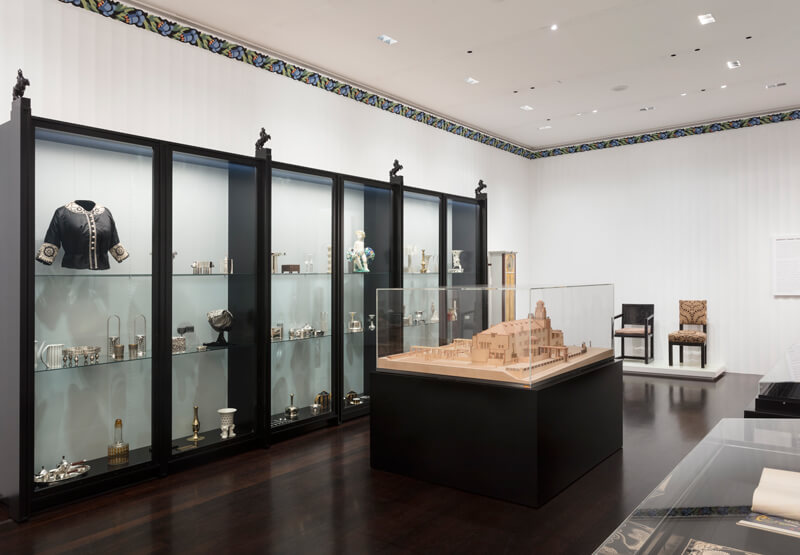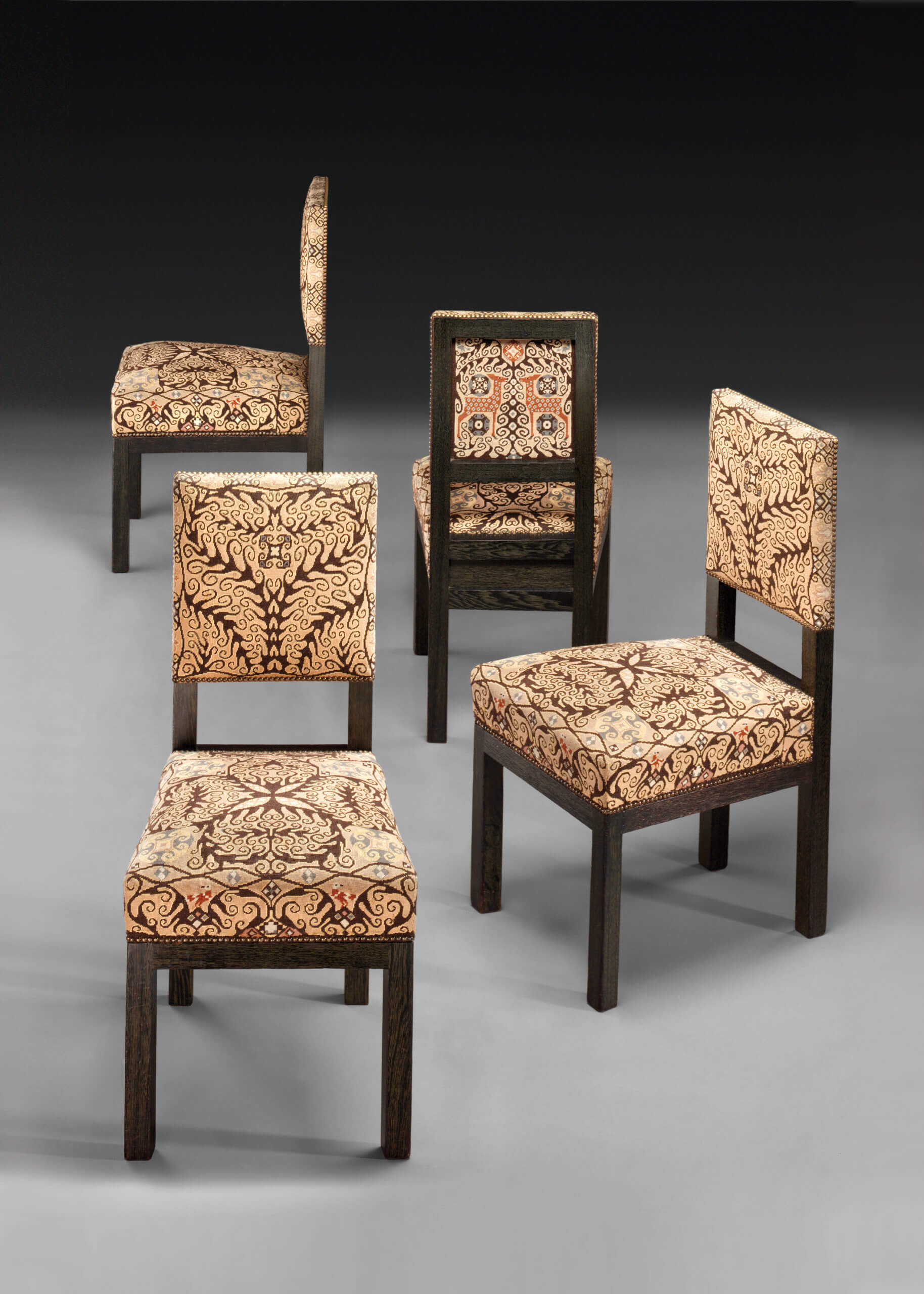
Made for
The dining room of the Hochreith hunting lodge of Karl Wittgenstein
Year
1905/06
Material
Oak wood, stained black, chalked yellow, embroidery in wool and silk
Dimensions
H. 97 x W. 48 x D. 56 cm
8 Pieces Made
Executed by
The Weiner Werkstätte
Der Preis Der Schönheit, 100 Jahre Weiner Werkstätte, MAK – Vienna, 2003 – 2004
Ways To Modernism – Josef Hofffmann, Adolf Loos, and their impact. MAK – Vienna, 2014 – 2015
Wiener Werkstätte 1903–1932: The luxury of beauty, Neue Galerie, New-York, 2017 – 2018
Josef Hoffmann : Progress by beauty, MAK, Vienna, 2020 – 2021
Archives of the Wiener Werkstätte; WWF 103, S. 123-126, 129, 132, 133, 135
Deutsche Kunst Und Dekoration; Vol. XIX, 1907/07, P. 443-445, 449, 450
Windisch-Graetz, F., Das Jagdhaus Hochreith. In: Alte Und Moderne Kunst; Salzburg 1967, No. 92, P. 30
Sekler, E. F., Josef Hoffmann. Das Architektonische Werk ; Vienna and Salzburg, 1982, P. 310f.
Der Preis Der Schönheit, 100 Jahre Weiner Werkstätte, MAK,Vienna, 2003 – 2004, P. 107
Witt-Döring, C. & Staggs, J. (Eds), Wiener Werkstätte 1903–1932: The Luxury Of Beauty, Prestel, Neue Galerie, New-York, 2017, P. 245-247
Josef Hoffmann – Interiors 1902-1913, Neue Galerie, New-York, 2006, P. 71
Schweiger, Werner J., Wiener Werkstätte – Design In Vienna 1903-1932, Abbeville Press, New-York, 1984, P. 163-165
Brandstätter. C, Gregori. D, Metzger. R., Vienna 1900 Complete, Thames And Udson, New-York, 2018, P. 181
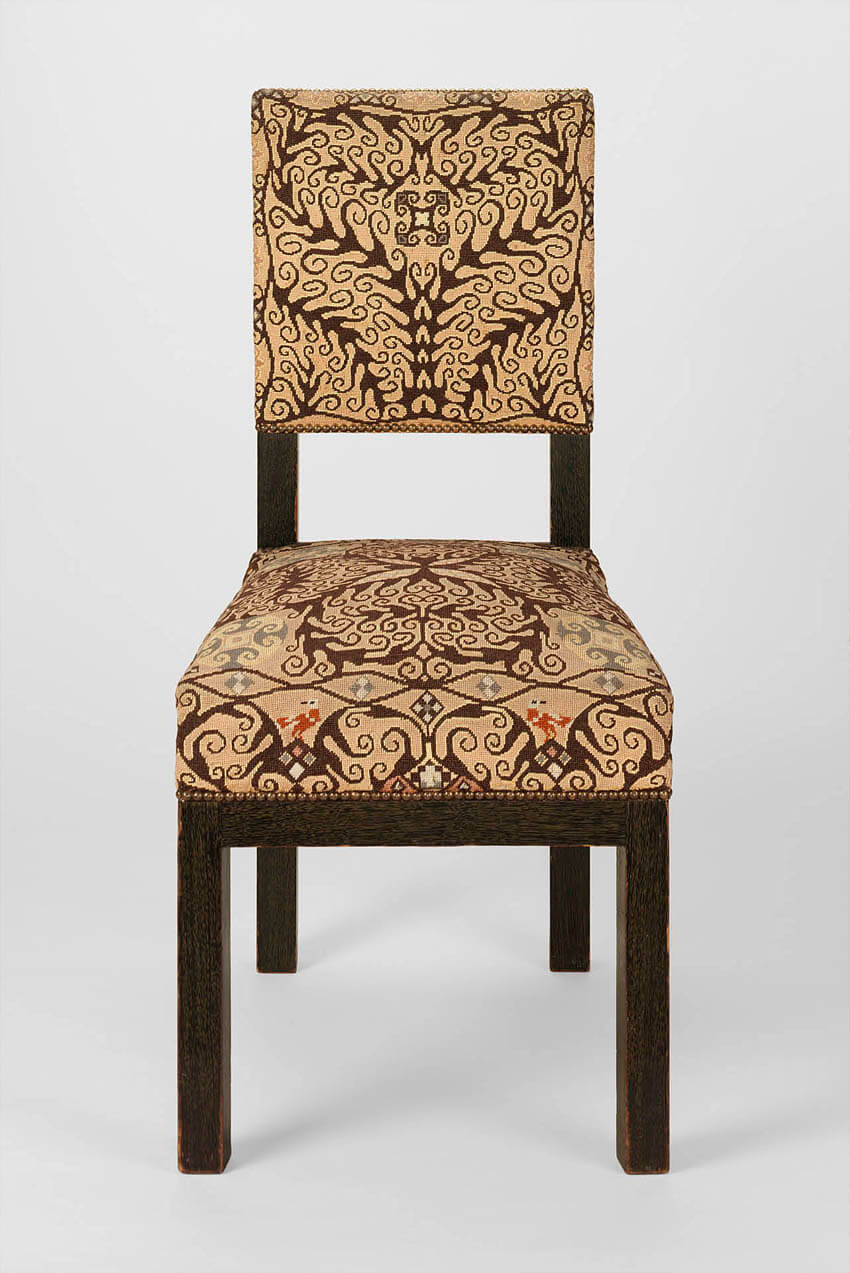
In 1905, the same year Karl Wittgenstein commissioned Josef Hoffmann and Koloman Moser to design the Berlin apartment of his daughter Margaret Stonborough-Wittgenstein, he asked Josef Hoffmann and the Wiener Werkstätte to fit out a living-dining room and a small vestibule in his Hochreith hunting lodge. The work was completed by mid-July 1906. Shortly before this, Fritz Wärndorfer, the co-founder and financier of the Wiener Werkstätte, inspected the rooms, now almost finished. He rhapsodises over his impression in a letter of 17 July 1906 to Josef Hoffmann: “Yesterday I went to Hochreith with Czeck (Czeschka), the room will be spick and span by Wednesday and handed over to the Wittgensteins due to arrive on Wednesday and it is quite simply overwhelmingly beautiful, absolutely not at all flashy, you don’t even feel the gold of the mouldings as individual features, I can quite imagine someone greatly admiring the room and then, when answering the question how he liked the gold mouldings, he would say he hadn’t noticed them at all, the carpet luxuriously warm, and the whole thing as I would imagine a privatissimum room of one of the Fugger dynasty in the Middle Ages. The water gushing from below into the golden washbasin looks simply fabulous and I’m afraid the large curtain fits in and runs like a dream and is an absolute necessity.”
This description gives us an idea of the original context of the exquisite interior where this chair stood. We have to imagine one large room divided in the middle by a curtain rather than a room partitioned into two. While the larger part of the room served as a dining room with an extensible dining table and eight seats, the smaller part was used as a sitting room with games table and a fold-out secretaire let into the wall, also a fireplace. The basic furnishing of the interior included two groups, each with four chairs, and identical in design. The first group, to which this chair belongs, stood around the dining table and differs from the second group only in the greater depth of the seat. Of the second, smaller version of the chair only three chairs were placed around the games table, since the fourth side of the latter stood in front of a seating recess in the wall. The fourth chair with the shallower seat was used as seating for the secretaire opposite the seating recess. Both room sections formed an optical unit through the uniform, high-gloss polished maracaibo wood panelling with gold mouldings and the light fitted carpet. While all built-in furniture such as wall cupboards and sideboard were made of the same wood as the wall panelling, all moveable pieces such as the tables and seating were made of black-stained oakwood, its pores rubbed in with yellow paint. Yellow pore closure instead of the otherwise frequent white is extremely rare in Hoffmann’s work. In this case the yellow is an aesthetic necessity as an intermediary between the gold mouldings of the panelling, the dining table, and the black-stained oakwood.
But closer perusal reveals the chairs extremely sophisticated construction and sumptuous handicraft in carpentry
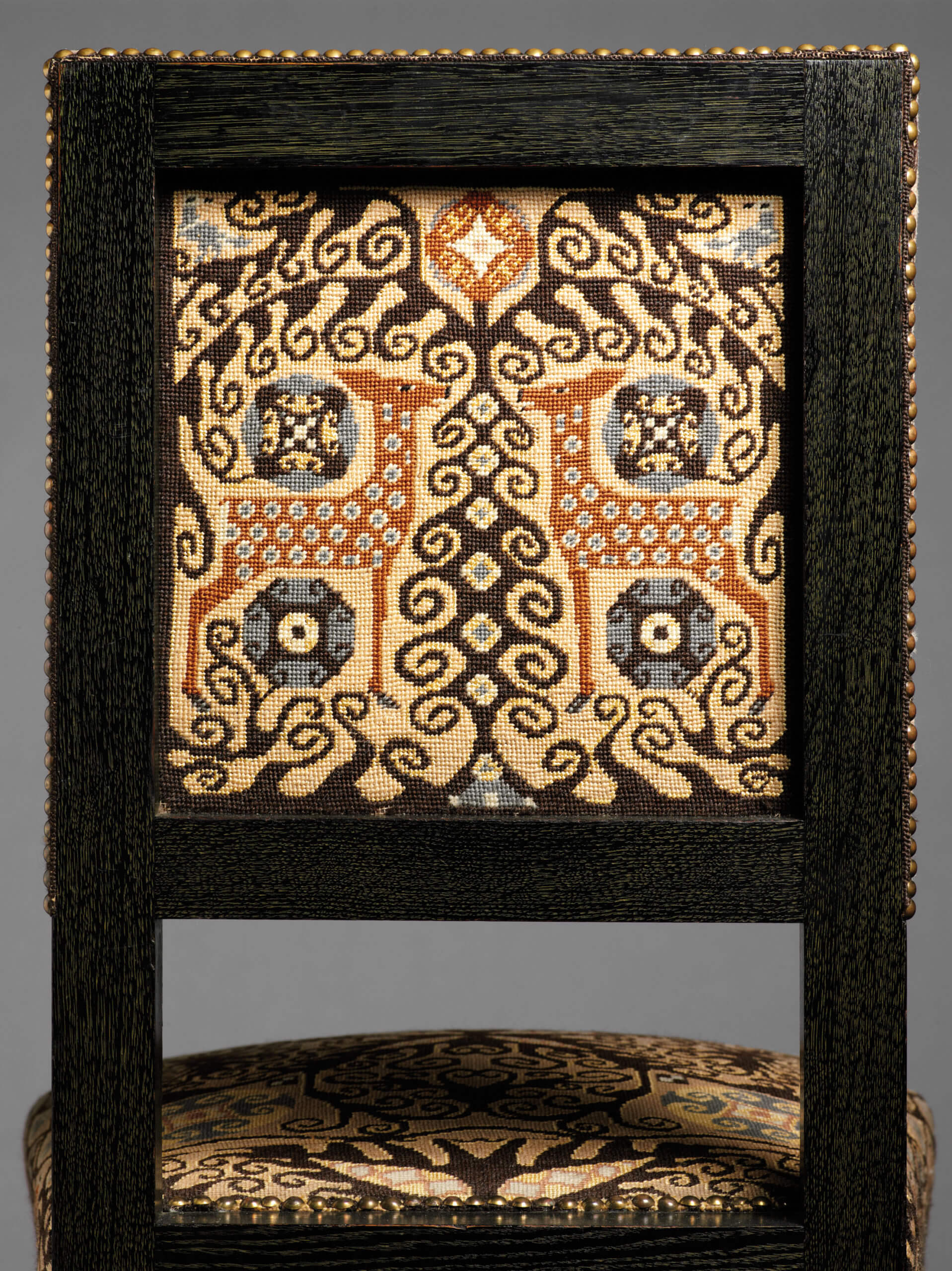
The chair’s form is typical of Hoffmann’s furniture around 1905. These are the years in which Hoffmann reached the peak of his endeavours to attain an aesthetic style based on geometric forms. At first glance the chairs create an impression of being reduced to the bare essentials, constituted of purely straight elements. But closer perusal reveals the chairs’ extremely sophisticated construction and sumptuous handicraft in carpentry. The seat is trapezoid, which means that none of the four corners is shaped as a right angle. However, in order to make the front legs appear flush with the seat frame, a parallelogram section is formed for the front legs. The sole decorative element is the chair’s textile upholstery. It was designed by Carl Otto Czeschka, a Hoffmann pupil and associate of the Wiener Werkstätte since 1905, and executed as embroidery. Both seat and the front and back of the backrest upholstery all show different motifs of symmetrically composed, stylised vine scrolls with scattered geometric elements. On the rear of the backrests there are another two affronted rows added. They are seen time and again at Hochreith, deployed as a kind of house logo or signet. Thus we encounter them on the stationery, also designed by Czeschka, also on the notepads for the card games and on the Hochreith dinner service.
CWD
Archives of the Hochreit Hunting Lodge


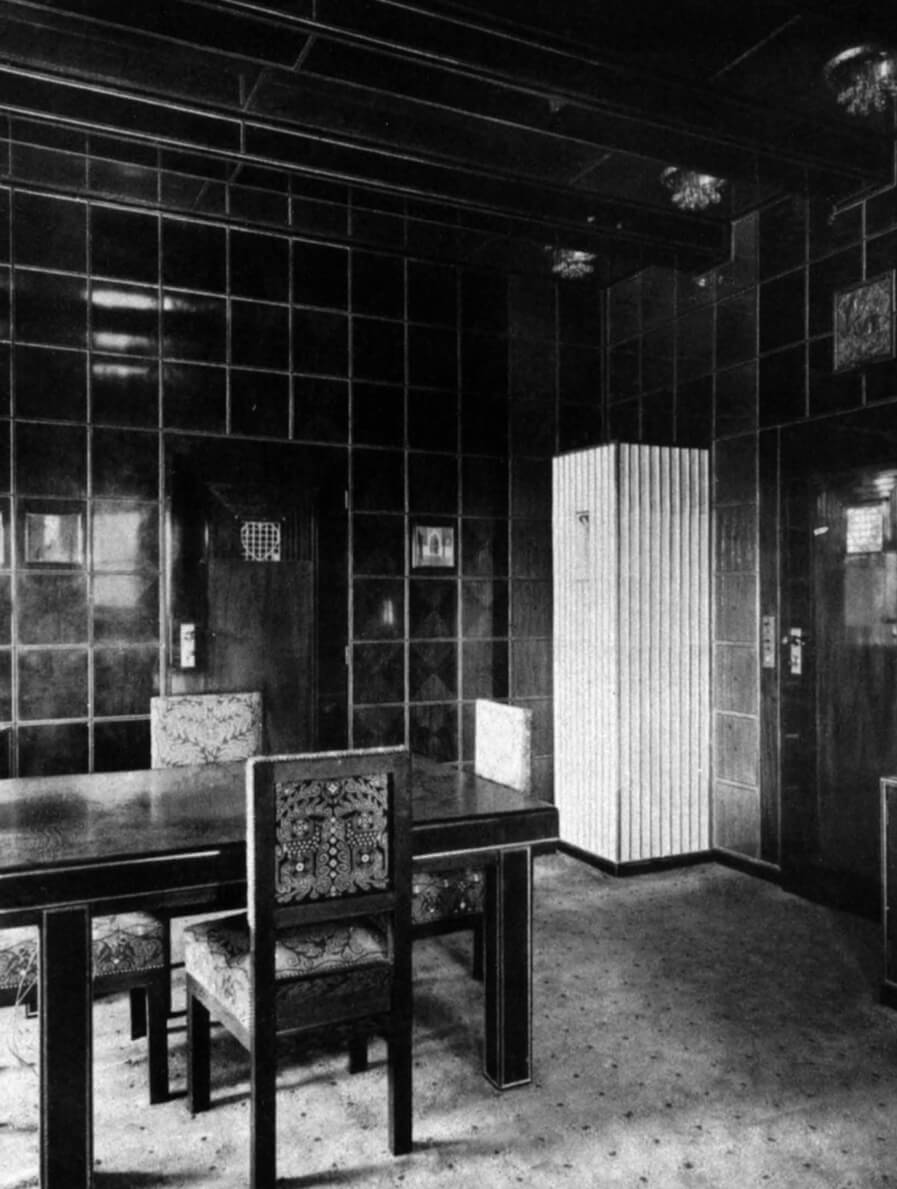
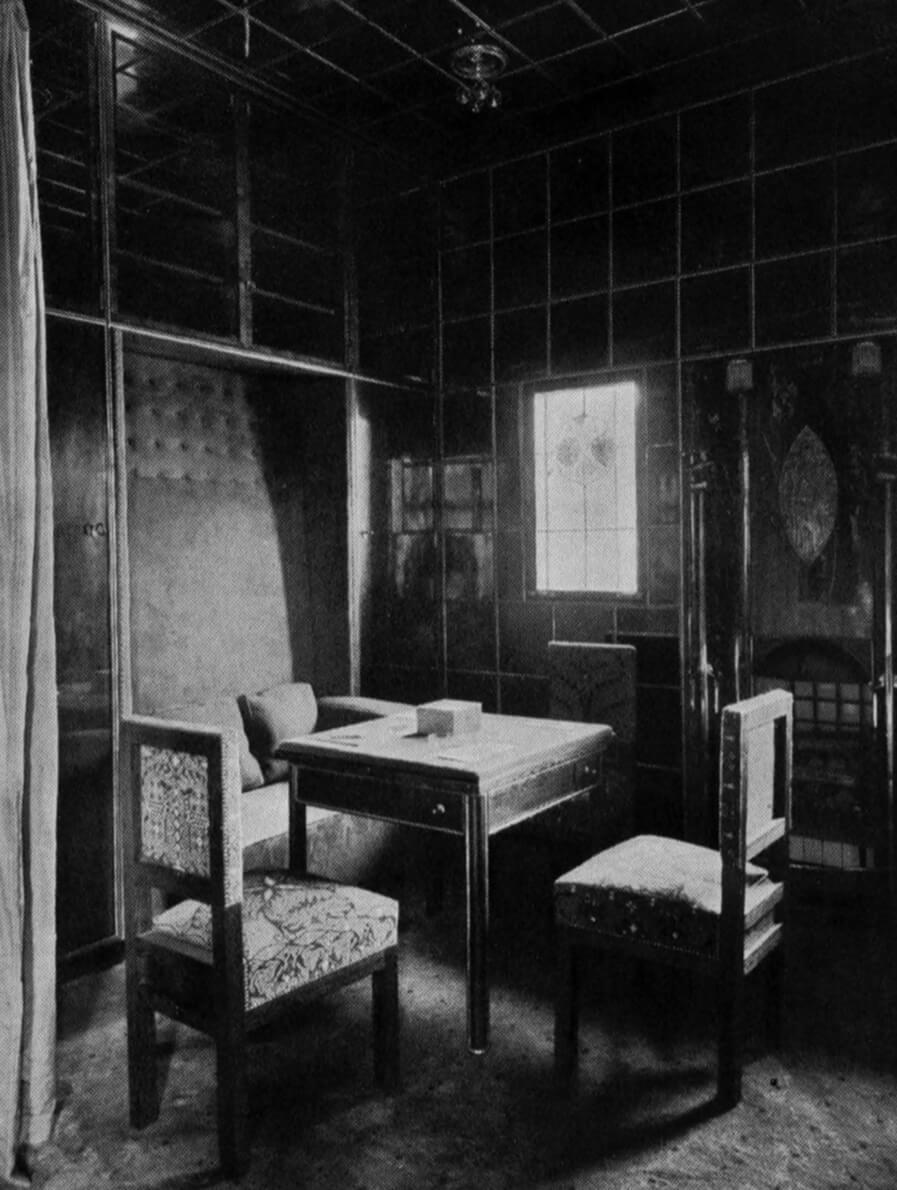
Wiener Werkstätte 1903–1932: The luxury of beauty, Neue Galerie, New-York, 2017 – 2018
